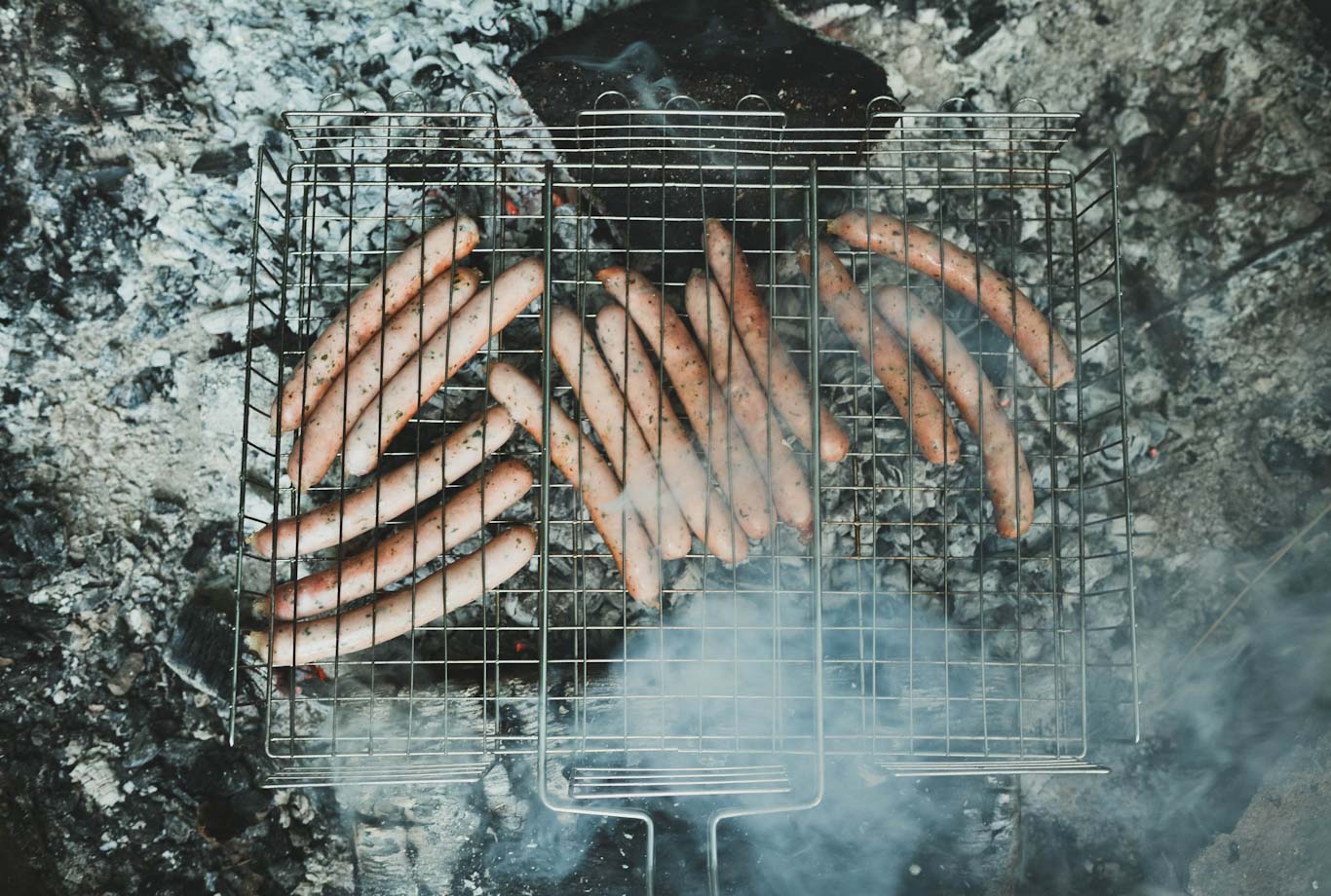1. Keep all your bits cold:
One of the most important things to remember when making sausages is to keep everything cold. A great tip from Matty Matheson is to use meat and fat that is ‘almost frozen’ – in his own words ‘if you grind meat that is warm or room temp it will turn into sludge, cold meat just grinds really nice’. This is because warmth ruins the emulsification (structure) of the meat and prevents both liquid and fat from absorbing into the meat. This leads to a dry, crumbly and less flavorful sausage. We recommend putting your meat or sausage mix and also your grinder blade and plate into the freezer for a minimum of 20 minutes before you start your grinding and sausage making. If you have a large batch of meat, keep anything you can’t fit into your grinder/sausage maker in the fridge until you need it.
2. Never skimp on the fat:
Fat lubricates the meat, acts as a binder and will make the sausage tender and juicy. Sausages that do not contain enough fat are typically dry and tasteless. Sausages should contain 25-30% fat. This may seem like a lot but many commercially made sausages contain 50% fat. So, you need 250-300g of fat per 1kg of sausage mix.
We recommend pork fat over beef fat if you have access to it. It is tastier and less yellow. We do not recommend fat from lamb, goat or wild game due to their odor unless specified in a particular ethnic sausage.
When it comes to sausage making, back fat is better than lower body fat. It is not greasy and has a lower water concentration which makes it thicker and more resistant to heat, which is perfect for sausages. You can generally buy fat from your local butcher.
3. Salt is your friend:
Sausages need salt. Salt is one of the simplest but most clever ingredients on the planet. Salt performs a number functions in a sausage. It helps develop and bring out the flavour, it helps with curing and firmness, water holding and juiciness, binding and texture and prevents water loss during cooking. In general, sausage contain about 1.5-2% of salt. We recommend not going above 3.5%. So, you need 1.5g-2g of salt per 100g of sausage meat mix or 15-20g per 1kg of sausage meat mix. Given how important salt is, we highly recommend you weight out your salt (don’t guess).
We do not recommend using iodised table salt in your sausages as it leaves a slight metallic taste. To check whether salt is iodised, check the ingredients list on the back of the packaging for the words ‘Potassium Iodate’. The word ‘iodised’ will usually be somewhere on the front of the pack as well.
4. Always Use Natural Sausage Casings:
Sausage casings are the hidden superhero of the humble sausage. If you want a great sausage, you need to use the best sausage casings – which are natural casings. Natural casings have an amazing 'semipermeable' wall which breathes, meaning none of your special sausage juices escape but all of the beautiful BBQ/cooking flavors are absorbed. That means your sausages will have super flavor and juiciness, great sizzle, a fantastic ‘pop’ and the trademark “smile” that you can only get from a natural sausage.
Collagen casings have a wall like soft plastic, meaning they don't absorb any beautiful BBQ flavours or match the all important 'snap' of a natural casing. They are also prone to splitting while cooking so your sausages juices will escape. So don’t settle for a sad, dry, tasteless sausage. Choose a natural casing.
5. Test before you fill:
A great way to test your sausage mix before filling your casings is to fry a small amount of the mix in a pan and taste it. This will give you a good idea what the final sausage will taste like and you can tweak your recipe before you fill your sausage casings. You can add more herbs, spices, salt, pepper etc.
6. Cook your snags low and slow and never prick your sausage:
Perhaps it’s the beers that normally accompany a BBQ, but Kiwi’s have a terrible tradition of burning the bejesus out of their sangers. The fatal mistake is that most have the pan or BBQ way too hot so the outside of the sausage burns before the inside is cooked and the sausage casing splits so all your precious sausage juices escape, meaning your sausage will be dry and far less tasty. Our advice is to cook your sossies low and slow.
Our final tip is never prick your sausage – don’t let those precious sausage juices escape!

